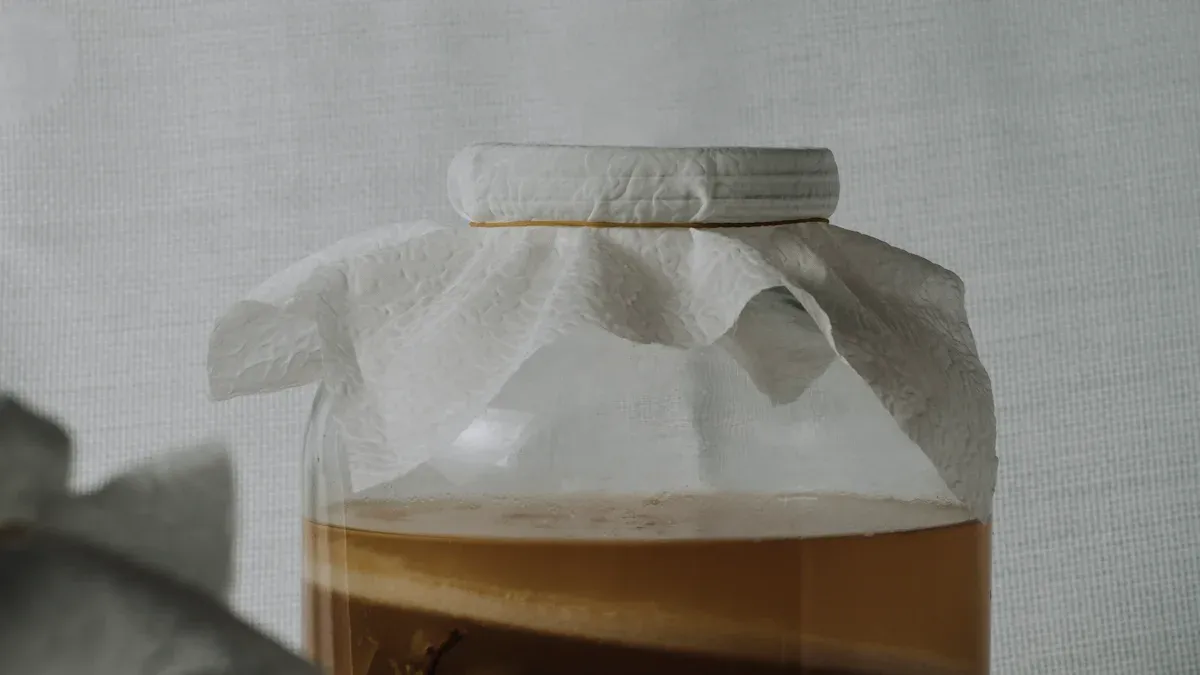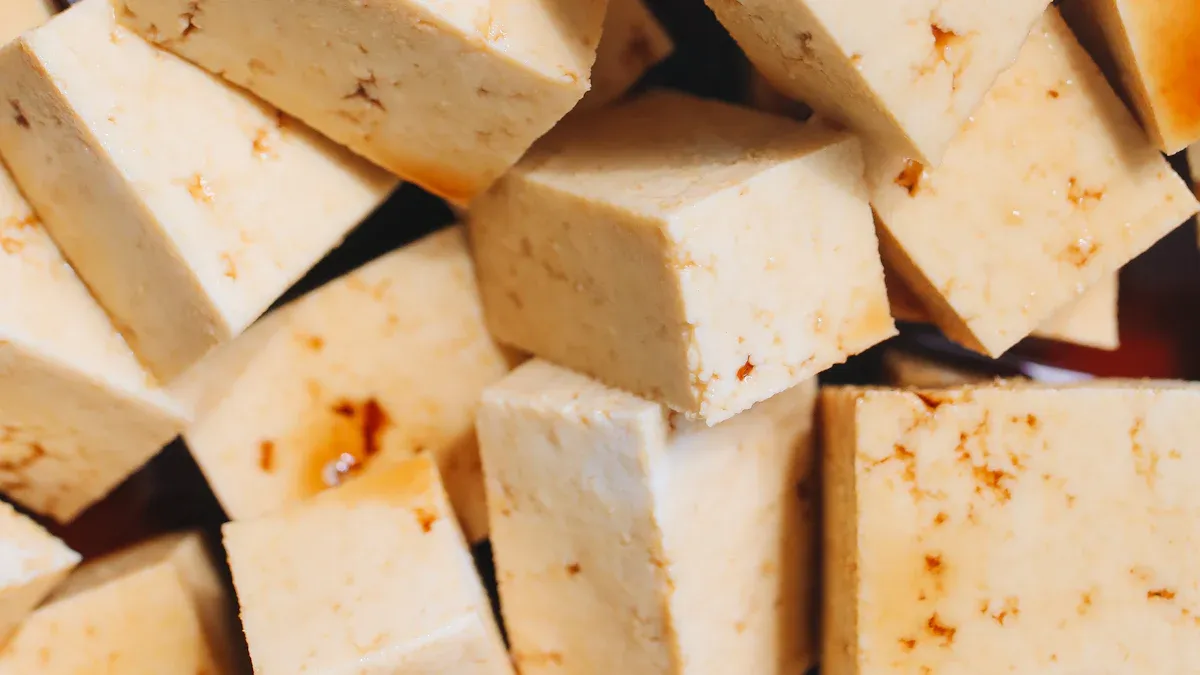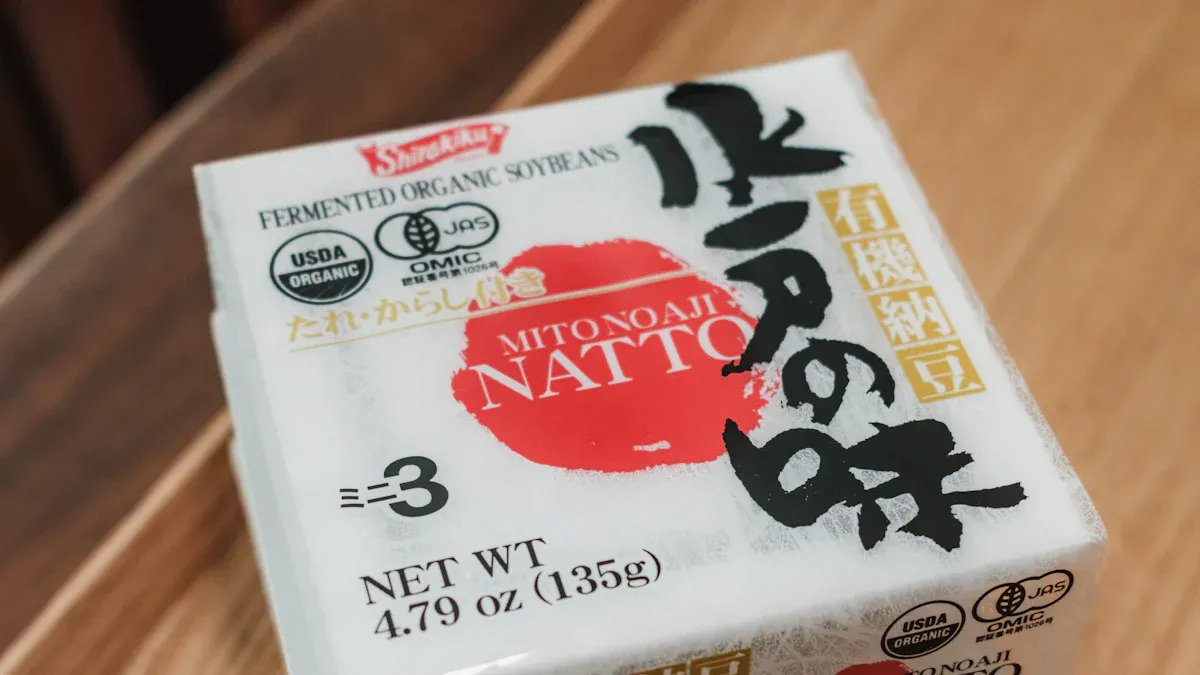Functional modification of soy protein isolate means changing its structure to help it work better in foods. You can use hydrolysis, crosslinking, and fermentation to make soy protein dissolve more easily, have a nicer texture, and cause fewer allergies.
These techniques help soy protein fit into many products. Some examples are plant-based diets, bakery goods, meat alternatives, and sports nutrition. More people want healthy, plant-based foods, so the need for modified soy protein isolate keeps growing.
Key Takeaways
Hydrolysis breaks soy protein into smaller pieces. This makes it easier to digest. It also lowers the chance of allergies. Use hydrolyzed soy protein in drinks and soups. It helps them mix better.
Crosslinking makes the protein network stronger. This improves texture and keeps food stable. Foods like tofu and meat alternatives use crosslinked soy protein. It helps make firmer gels and better food shapes.
Fermentation boosts flavor and nutrition. It also lowers allergenicity. Add fermented soy protein to baked goods and dairy-like foods. This gives better taste and health benefits.
Mixing methods like hydrolysis and crosslinking can give better results. Try different techniques to see what works best for your food.
Modified soy protein isolate is very useful. It can improve taste, texture, and nutrition in many foods. Pick the right method for your product’s needs.
Hydrolysis
What Is Hydrolysis
Hydrolysis breaks big protein molecules into smaller pieces called peptides. Enzymes like proteases help do this job. Fermentation can also help break down proteins. Enzymatic hydrolysis lets you control how much the protein breaks apart. This makes foods easier to digest and less likely to cause allergies.
Enzymatic hydrolysis uses different proteases to change soy protein isolate.
You can pick mild or strong hydrolysis to make hypoallergenic foods.
Hydrolysis helps proteins dissolve, foam, and mix with other ingredients.
Effects on Soy Protein Isolate
Hydrolysis changes soy protein isolate’s structure and how it works in food. The degree of hydrolysis (DH) matters a lot. If you choose the right DH, the protein will dissolve better and mix with fats and water. For example, a DH of about 8% gives the best mixing and solubility. Too much hydrolysis can make the protein not work as well. Hydrolysis also releases bioactive peptides. These small pieces can help your health by lowering blood pressure, fighting oxidation, and helping with weight control.
Hydrolysis makes soy protein easier to digest. How you process the protein and its form can change how fast your body absorbs it.
You get the best results by controlling pH and temperature. Here is a table with some common enzymes and their best conditions:
Enzyme | Optimal pH | Optimal Temperature (°C) |
|---|---|---|
Alcalase | 8 | 46.21 |
Trypsin | 7.11 | 41.85 |
Benefits & Uses
Hydrolyzed soy protein isolate is used in many foods. You find it in spice blends, meat products, snacks, soups, sauces, and ready-to-cook meals. It helps improve taste, texture, and nutrition. Modified soy protein isolate makes foods healthier and easier to eat.
Crosslinking
What Is Crosslinking
Crosslinking connects protein molecules to make a stronger network. Enzymes like transglutaminase help with this process. Transglutaminase works like glue and links parts of the protein. This helps soy protein form gels and gives foods better structure. Researchers study this process in different ways. Here is a table that shows some studies:
Study | Focus | Findings |
|---|---|---|
Motoki M, Seguro K. 1998 | Transglutaminase in food processing | |
Tang CH et al. 2007 | Cold-set tofu formation | Explains how microbial transglutaminase helps soy protein form gels. |
Effects on Soy Protein Isolate
Crosslinking changes the texture and stability of soy protein isolate. The protein forms a network that holds water and keeps its shape. This makes foods like tofu softer and easier to cut. You also get stronger films for food packaging. Here are some main effects:
Crosslinking makes the protein network more open if you do not use salt.
The amount of crosslinking changes how the protein feels and looks.
Gel swelling depends on how stretchy and charged the network is, not just its structure.
Crosslinking also improves how the protein mixes with water and oil. New bonds help the protein make stable mixtures and better textures in foods.
Benefits & Uses
Crosslinked soy protein isolate is used in many foods. It works well in products that need good mixing, gel making, and blending with oil. You find it in tofu, meat alternatives, and food packaging. Crosslinked protein films keep out air and water, which helps food last longer. Adding natural extracts or oils can stop spoilage and keep food fresh.
You can also mix crosslinking with hydrolysis. This makes the protein even more stable and easier to digest. Studies show that using sound waves or changing pH with crosslinking can make soy protein isolate work better in foods.
Tip: Try crosslinked soy protein isolate if you want foods with better texture, longer shelf life, and improved nutrition.
Fermentation

What Is Fermentation
Fermentation uses good microorganisms to change soy protein isolate. You add bacteria, yeast, or molds to the protein. These tiny living things break down the protein and other parts of soybeans. Proteases from microbes cut the protein into smaller pieces. Amylases turn starches into sugars. Lipases break down fats. This helps the microbes grow and work better. It also makes the protein easier to digest and improves taste and texture.
Here are some common microorganisms and what they do in fermentation:
Microorganism | Fermentation Process Description |
|---|---|
Pediococcus acidilactici | Ferments soy dough and makes it 15.9% easier to digest. |
Lactobacillus helveticus | Ferments soy protein isolate slurry and lowers allergenicity of β-conglycinin. |
Saccharomyces cerevisiae | Ferments with Lactobacillus and increases ACE-inhibitory activity. |
Rhizopus spp. | Used in tempeh, adds probiotics, and fights bad bacteria. |
Effects on Soy Protein Isolate
Fermentation changes how soy protein isolate works in food. It gives better texture, more flavor, and higher nutrition. Fermentation can lower allergenicity by breaking down allergy-causing proteins. For example, Lactobacillus helveticus or Enterococcus faecalis can reduce IgE reactions to soy allergens. Studies show fermentation breaks big allergenic proteins into smaller, safer pieces. You also get more amino acids like arginine and glutamic acid. These help your body. Fermentation increases isoflavones and antioxidants. This makes the protein healthier.
If you mix fermentation with enzymatic hydrolysis, you get even better results. This mix boosts umami flavor, improves nutrition, and increases enzyme activity. You can make soy protein isolate with better taste and health benefits.
Benefits & Uses
Fermented soy protein isolate is used in many foods. It helps meat products, bread, cakes, and ice cream taste and feel better. Factories use it as a stabilizer in sauces and creams. Pet food makers use it for its nutrition. Fermentation makes soy protein isolate more useful in food and industry.
Tip: Try fermented soy protein isolate if you want foods with better flavor, texture, and nutrition.
Modified Soy Protein Isolate: Comparison

Method Comparison
There are three main ways to change soy protein isolate. These are hydrolysis, crosslinking, and fermentation. Each way gives the protein new features. Here is a simple table to compare them:
Modification Method | Main Process | Key Changes in Protein | Typical Enzyme or Microbe |
|---|---|---|---|
Hydrolysis | Breaking protein into parts | Smaller peptides, better mix | Proteases (e.g., alcalase) |
Crosslinking | Linking protein chains | Stronger network, firmer gels | Transglutaminase |
Fermentation | Using microbes to change it | More flavor, less allergen | Lactic acid bacteria, yeast |
Hydrolysis uses enzymes to cut the protein into smaller pieces. This helps the protein dissolve, foam, and mix better. The enzyme you pick changes how much the protein breaks down. Alcalase breaks down the most, then flavourzyme, papain, bromelain, neutrase, and trypsin.
Crosslinking connects protein chains together. This makes the protein network stronger and gives foods a better texture. Transglutaminase is the main enzyme for this process.
Fermentation uses good microbes to change the protein. These microbes break down the protein and add flavor. Fermentation also makes foods less bitter. For example, fermented hydrolysates taste less bitter, with a score of 0.7 out of 10. Non-fermented ones taste more bitter, with scores from 2.8 to 8.0.
Tip: You can use more than one method for better results. For example, you can do hydrolysis first and then crosslinking. This makes the protein easy to digest and more stable.
Functional Impact
Each method changes how you use soy protein isolate in foods. Here are some main effects:
Hydrolysis helps the protein dissolve in water. You can use it in drinks, soups, and sauces. It also helps with foaming and mixing oil and water. This is good for foods that need air, like whipped toppings.
Crosslinking gives the protein a firm texture. You can use it in tofu, meat alternatives, and gels. It also helps make films for food packaging. These films keep food fresh by blocking air and water.
Fermentation adds flavor and makes the protein less likely to cause allergies. You can use it in bread, cakes, and dairy-like foods. Fermentation also boosts nutrition by adding amino acids and antioxidants.
Here are some practical uses for each method:
Hydrolyzed soy protein helps with gelation, emulsifying, foaming, and water absorption. It works well in foods with moderate acidity because it dissolves at low pH.
Crosslinked soy protein is good for foods that need a firm texture or stable gels. It also helps make edible films.
Fermented soy protein gives better taste and nutrition. It helps keep probiotic bacteria alive longer in foods.
When you pick a method, think about what your product needs. Do you want the protein to dissolve better? Try hydrolysis. Do you need a firm texture? Use crosslinking. Do you want more flavor and fewer allergies? Fermentation is a good choice. You can also try other ways to change soy protein, like heat treatment, alkaline modification, or glycosylation. Each way changes the protein in its own way. Match the method to your food’s needs.
Note: Modified soy protein isolate helps you make foods that taste better, last longer, and meet special nutrition needs. Pick the best method by thinking about your product’s texture, flavor, and health goals.
You can use hydrolysis, crosslinking, or fermentation to change soy protein isolate. Each way helps make texture, taste, or nutrition better. Modified soy protein isolate is good for drinks, snacks, and meat alternatives. Before you pick a method, think about what your product needs. Try different ways to see which one works best. Food science keeps improving, so you may find more uses later.
FAQ
What does hydrolysis do to soy protein isolate?
Hydrolysis breaks soy protein into smaller parts. This makes it dissolve better in water. It also helps your body digest it more easily. Hydrolysis can lower the chance of allergies. You can add hydrolyzed soy protein to drinks, soups, and snacks.
How does crosslinking improve food texture?
Crosslinking links protein chains together. This makes gels firmer and food stronger. Foods like tofu and meat alternatives feel smoother. They also keep their shape better.
Why should you use fermentation with soy protein isolate?
Fermentation uses helpful microbes to change soy protein. This gives foods better flavor and more nutrition. It also lowers the chance of allergies. Fermented soy protein works well in bread, cakes, and dairy-like foods.
Can you combine modification methods?
Yes! You can use hydrolysis and crosslinking together. This makes soy protein easy to digest and keeps its texture stable. Many food makers mix methods for better results.
Is modified soy protein isolate safe to eat?
You can eat modified soy protein isolate safely. Food scientists test these ways to make sure they work. Modified soy protein helps foods taste better and gives more nutrition.

